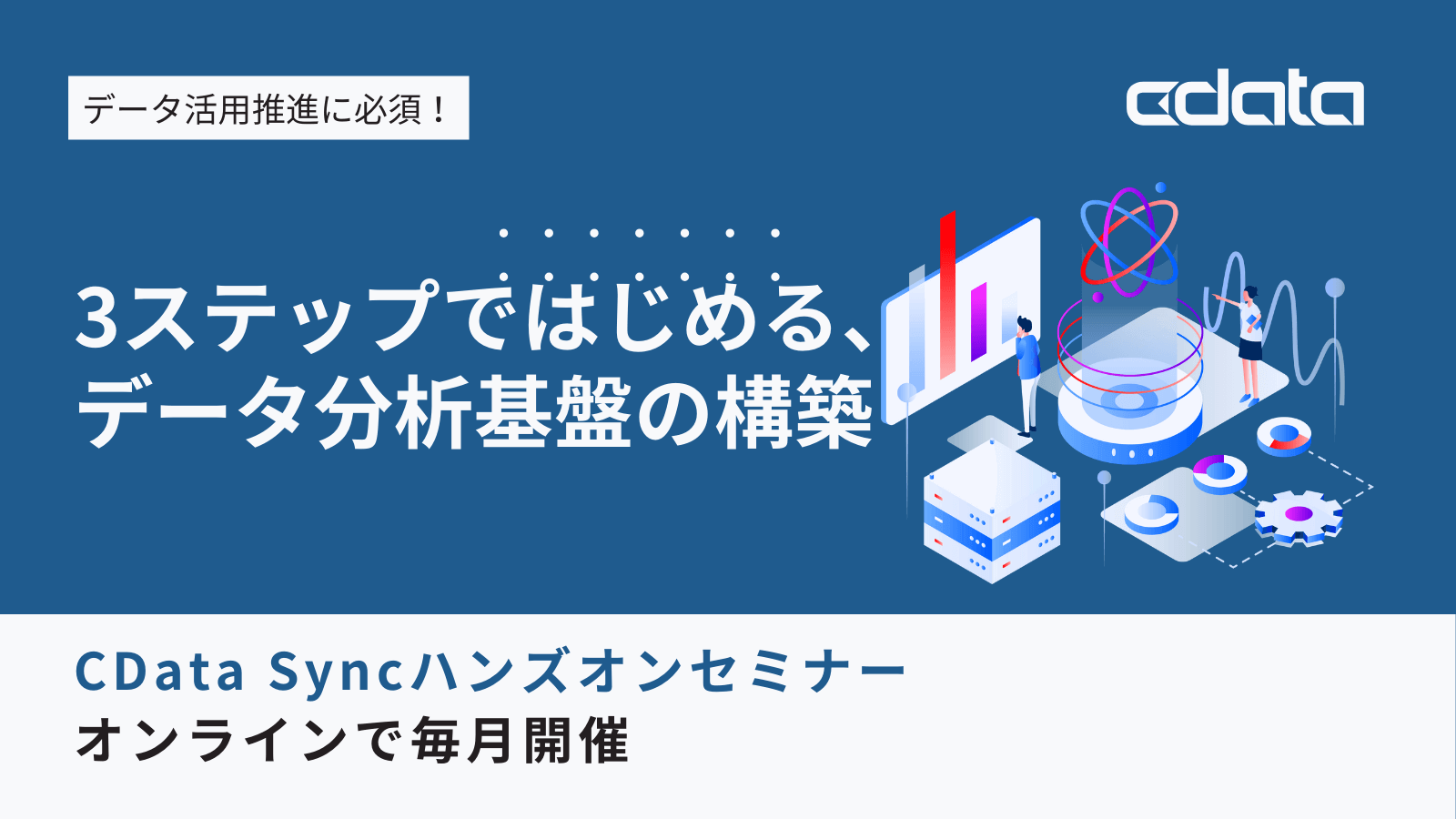ノーコードでクラウド上のデータとの連携を実現。
詳細はこちら →CData Software Japan - ナレッジベース
Latest Articles
- MySQL のデータをノーコードでREST API として公開する方法:CData API Server
- CData Sync AMI をAmazon Web Services(AWS)で起動
- Connect Cloud Guide: Derived Views, Saved Queries, and Custom Reports
- Connect Cloud Guide: SSO (Single Sign-On) and User-Defined Credentials
- Connect Cloud クイックスタート
- Shopify APIのバージョンアップに伴う弊社製品の対応について
Latest KB Entries
- DBAmp: Serial Number Expiration Date Shows 1999 or Expired
- CData Drivers のライセンスについて
- Spring4Shell に関する概要
- Update Required: HubSpot Connectivity
- CData Sync で差分更新を設定
- Apache Log4j2 Overview
ODBC Drivers
- [ article ] PowerShell を使ってZoho Projects データをSQL Server ...
- [ article ] RPA ツールUiPath でBasecamp データを連携利用する方法
- [ article ] PowerShell を使ってTwitter データをSQL Server にレプリケーション
- [ article ] Tableau Bridge でTableau Cloud からのBigQuery データ連携を実現
JDBC Drivers
- [ article ] JDBC データソースでAlloyDB との間にInformatica マッピングを作成
- [ article ] IntelliJ からSage 50 UK データに連携
- [ article ] Google Cloud Data Fusion でWooCommerce ...
- [ article ] AWS Glue ジョブからQuickBooks データにJDBC 経由で接続
SSIS Components
- [ kb ] Setup Routines Could not be Loaded Error Code 126
- [ article ] SSIS を使ってSAS Data Sets データをSQL Server にインポート
- [ article ] SSIS を使ってSAP HANA データをSQL Server にインポート
- [ article ] Microsoft Planner をSSIS 経由でSQL サーバーにバックアップする
ADO.NET Providers
- [ article ] Neo4J をSSIS 経由でSQL サーバーにバックアップする
- [ article ] Paylocity データをDevExpress Data Grid にデータバインドする。
- [ article ] LINQ to Databricks データに連携してみた
- [ article ] SAP Hybris C4C をSSIS 経由でSQL サーバーにバックアップする
Excel Add-Ins
- [ article ] ソフトウェア開発ツールMZ Platform でExcel データと連携
- [ article ] Microsoft Power BI Designer でCData Software ODBC ...
- [ article ] StiLL からCData Software ODBC Driver を使ってSAP につないでみた
- [ article ] Excel を使ってPCA Sales にデータを追加したり、PCA Sales ...
API Server
- [ article ] Microsoft SQL server へのOData データのETL/ELT ...
- [ article ] PHP からOData データに接続する方法
- [ article ] OData データのPostgreSQL インターフェース
- [ article ] Alteryx Designer でOData データを準備、ブレンディング、分析する
Data Sync
- [ article ] Oracle Financials Cloud をHeroku ...
- [ article ] Apache Cassandra へのMYOB AccountRight データのETL/ELT ...
- [ article ] Oracle データベースへのAsana データのETL/ELT ...
- [ article ] DB2 へのMonday.com データのETL/ELT パイプラインを作ってデータを統合する方法
Windows PowerShell
- [ article ] GitHub データをPowerShell script でSQL Server ...
- [ article ] PowerShell を使ってPaylocity データをSQL Server にレプリケーション
- [ article ] PowerShell を使ってDropbox データをSQL Server にレプリケーション
- [ article ] SAP HANA データをPowerShell でMySQL にレプリケーションする方法
FireDAC Components
- [ article ] Delphi のGoogle Calendar データへのデータバインドコントロール
- [ article ] Delphi のSybase データへのデータバインドコントロール
- [ article ] Delphi のSmartsheet データへのデータバインドコントロール
- [ article ] Delphi のHighrise データへのデータバインドコントロール





